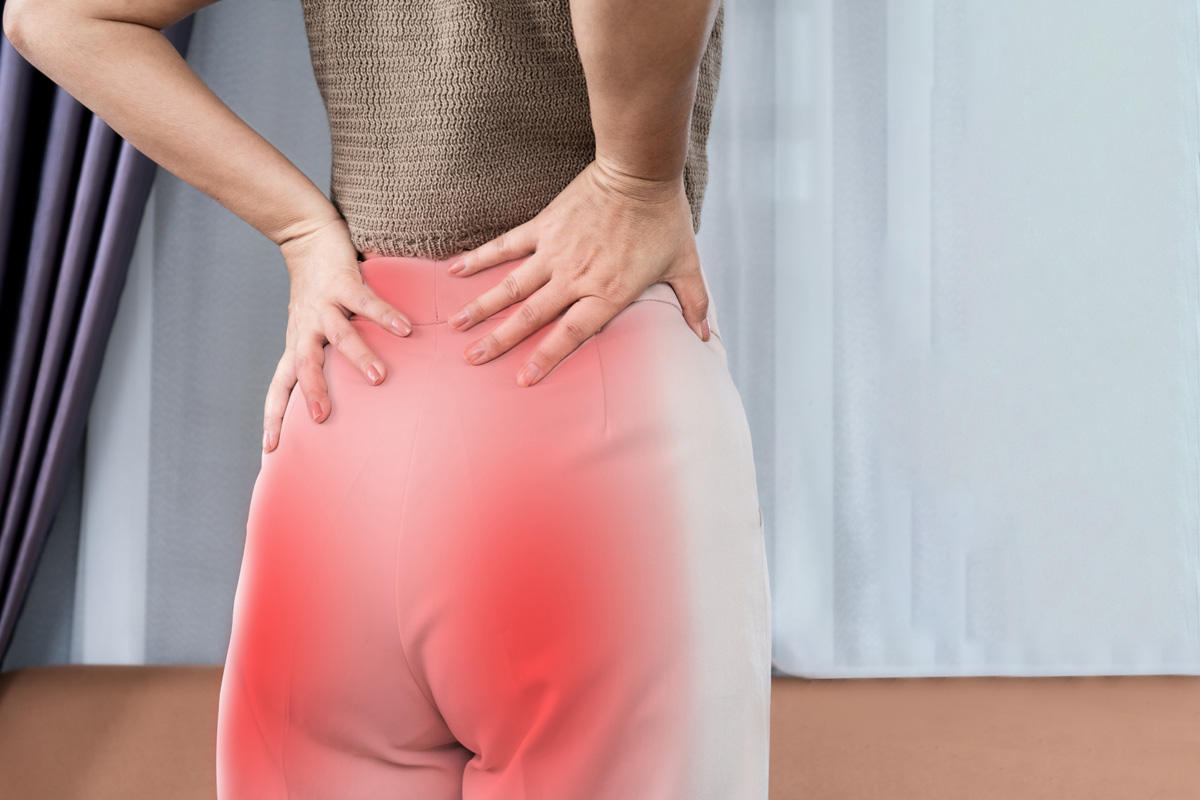Lower back pain is a substantial burden that affects a large part of the population and has considerable implications on quality of life. Engaging in self-care practices, such as mindful movement, strategic pain management, and lifestyle adjustments, can greatly reduce discomfort and improve daily functioning. To fully comprehend the benefits, it is necessary to explore how these elements work in tandem to facilitate healing and prevention. The question then arises: how can we incorporate these self-care methods into our routine to manage lower back pain effectively?
Understanding Lower Back Pain
Exploring the domain of lower back pain, it is essential to recognize that this prevalent discomfort can arise from different sources, greatly affecting one’s quality of life. Pain triggers can vary, ranging from physical strain caused by heavy lifting or sudden movements to more complex conditions like osteoarthritis or herniated discs.
In addition to these physical triggers, it is important to take into account the psychological effects of lower back pain. Chronic pain can lead to emotional distress, inducing feelings of anxiety and depression. The persistent discomfort can limit a person’s daily activities, leading to a sense of isolation and frustration, further exacerbating the psychological impact. This cyclical relationship between pain and mental health shapes an individual’s perception of their pain, thereby influencing their pain experience.
Understanding these pain triggers and their psychological effects allows for a more comprehensive approach towards managing lower back pain. It helps in identifying the root causes of the discomfort and formulating effective strategies to mitigate its impact. Knowledge is power, and in this context, it can be a valuable tool to alleviate suffering and improve one’s quality of life.
The Role of Posture
In the context of lower back pain, proper posture plays an essential role as it greatly contributes to the alignment and overall health of the spine. When we habitually sit, stand, or walk in a misaligned manner, it puts undue stress on the back, leading to discomfort and, over time, potentially chronic pain. This is where understanding the spinal alignment basics becomes important. The spine has natural curves that need to be maintained for excellent health. This doesn’t mean a rigid, military-style stance, but rather a balanced, relaxed alignment.
Now, maintaining this ideal posture may seem challenging, particularly for those already dealing with back discomfort. This is where posture correcting devices can be beneficial. These devices, ranging from simple braces to smart wearable technology, aim to gently guide the body back into correct alignment, reducing strain on the lower back. This, in turn, can alleviate pain and encourage healthier habits moving forward.
Strengthening Exercises for Relief
In our exploration of self-care for lower back pain, it’s vital to discuss the role of strengthening exercises. These physical activities, which include a core strengthening regimen, yoga, and back-friendly cardio exercises, can provide significant relief. We’ll examine each of these in detail, focusing on their benefits and how to perform them safely.
Core Strengthening Regimen
Why is a core strengthening regimen essential for lower back pain relief, you may ask? The core muscles support the spine and when strengthened, can alleviate the strain on your back. This regimen, coupled with dietary adjustments and addressing sleep patterns, can greatly enhance your recovery process.
Here are some core-strengthening exercises:
– Planks: Provides thorough core stability.
– Bridges: Strengthens gluteus and lower back muscles.
– Bird Dog: Enhances balance and strengthens the spine.
– Abdominal crunches: Strengthens abdominal muscles, reducing back strain.
– Pilates: Offers a full-body workout, focusing on core strength.
Yoga for Relief
Moving into the world of yoga, this ancient practice offers a multitude of poses specifically designed to strengthen the lower back and provide relief from pain. Utilizing yoga props can offer additional support and increase the effectiveness of these poses. For beginners, a guide to asanas (yoga poses) can be a helpful tool in exploring this new territory.
The Cat-Cow and Child’s Pose are two beginner-friendly asanas that specifically target lower back muscles. The use of props, such as yoga blocks or bolsters, can make these poses more accessible and comfortable. With consistent practice, yoga can not only alleviate back pain but also improve posture and overall body strength. Remember, it’s important to listen to your body and not push beyond your comfort zone.
Back-friendly Cardio Exercises
Shifting from yoga, consider incorporating back-friendly cardio exercises into your routine as these can further strengthen your lower back and provide additional pain relief. These exercises are designed to improve cardiovascular health, flexibility, and muscle strength without straining your back.
Here are some recommended exercises:
- Aqua Jogging: The benefits of aqua jogging include lower impact on joints and the back, while still providing a robust cardio workout.
- Pilates: Its impact on strengthening the core can indirectly benefit the lower back by providing better support.
- Elliptical Machine Workouts: These provide a full-body workout, including lower back, with minimal stress on the spine.
- Stationary Bike: Cycling in a controlled environment can help strengthen the back without the risk of sudden jerks or impacts.
- Walking: A simple yet effective low-impact exercise that can help improve back health.
Stretching Techniques to Consider
Have you ever thought about integrating stretching techniques into your daily routine to alleviate lower back pain? These methods, often underestimated, can be a game changer when it comes to maintaining spinal health and managing chronic discomfort.
One method to ponder is Pilates. This unique form of exercise is known for its core-strengthening and flexibility-enhancing benefits, which can be particularly helpful for the lower back. Pilates benefits include improved alignment and posture, both essential for reducing stress on the lower back. It also encourages controlled, mindful movements, which can help prevent further injury.
Hydration is another important factor to take into account when dealing with lower back pain. The significance of hydration cannot be overstated, especially in relation to muscle and joint health. Adequate water intake ensures that nutrients are effectively transported to your muscles, enhancing their elasticity and reducing the risk of spasms and cramps.
Integrating these techniques may not completely eliminate back pain, but they can notably improve your quality of life. Remember, consistency is key. Regularly practicing these exercises and maintaining hydration can lead to noticeable improvements over time. Pain management is a journey, and these techniques are your tools for a healthier back.

The Importance of Regular Movement
Understanding the importance of regular movement is essential in managing lower back pain. It not only offers benefits such as improved flexibility and muscle strength but also plays a significant role in the healing process. In the upcoming discussion, we will explore these benefits in detail and discuss how to incorporate movement into your daily routine effectively.
Benefits of Frequent Activity
Regular movement’s role in mitigating lower back pain cannot be overstated, providing both immediate and long-term benefits for sufferers. The key here is the activity frequency and exercise consistency, which work hand in hand to alleviate discomfort.
The benefits include:
- Increased blood flow to the back, speeding up the healing process
- Strengthening of core and back muscles, providing better support for the spine
- Promotion of a healthy weight, reducing strain on the lower back
- Improvement in flexibility and posture, reducing chances of strain
- Release of endorphins, the body’s natural painkillers
Incorporating regular movement into your routine doesn’t have to be intimidating. Even gentle activities like walking or swimming can significantly enhance lower back pain over time.
Movement’s Role in Healing
Building upon the mentioned advantages of frequent activity, it’s worth exploring in more detail the therapeutic power of regular movement in the healing process of lower back pain. Movement, when done appropriately, maintains body alignment, ensuring the spine retains its natural curve and reducing the risk of further injury. Regular movement also strengthens the core muscles, providing the back with the support it needs for daily activities, playing an important role in injury prevention. A sedentary lifestyle, on the other hand, can exacerbate back pain and prolong the healing process. Incorporating regular, gentle movement into your daily routine can play a key role in the healing process, reduce discomfort, and improve your overall well-being.
Heat and Cold Therapy Explained
The efficient use of heat and cold therapies can greatly alleviate lower back pain, offering a non-invasive and cost-effective solution for those seeking relief. These therapies work by manipulating the blood vessels in the affected area, thereby reducing inflammation and discomfort.
It’s important to know when to utilize heat or cold therapy:
- Ice Pack Benefits: Ice packs are ideal for acute injuries or pain, along with inflammation and swelling. They work by narrowing blood vessels, which slows down blood flow to the injury site, thereby reducing swelling and numbing pain.
- Heat Wrap Usage: Heat therapy is beneficial for chronic muscle pain or stiffness. The warmth expands blood vessels, enhancing circulation and delivering nutrients to muscles and joints, aiding in relaxation and healing.
- It’s vital to protect your skin from direct contact with heat or cold sources to avoid burns or frostbite.
- Heat or cold therapy should be applied in 15 to 20-minute intervals, with a break in between to prevent skin damage.
- Always consult with a healthcare professional if pain persists or worsens after self-care.
Understanding these therapies will enable you to manage your back pain more effectively, leading to a better quality of life.
Over-the-Counter Medications Guide
Exploring the wide range of over-the-counter medications available for lower back pain can be a challenging task; however, understanding their importance and proper usage can greatly help in managing your discomfort effectively. Painkiller options include nonsteroidal anti-inflammatory drugs (NSAIDs), like ibuprofen and naproxen, and acetaminophen. These medications can help to reduce inflammation and relieve pain, making daily tasks more manageable.
However, it is vital to remember that these medications are not without potential side effects. Most commonly, these can include stomach upset, heartburn, and a risk of gastrointestinal bleeding with prolonged use. Hence, it is essential to adhere to the recommended dosage and not exceed it without consulting a healthcare professional.
Side effects management is equally important while using these medications. Drinking plenty of water, taking the medication with food, and avoiding alcohol can help reduce the risk of adverse effects. Additionally, if you notice any unusual symptoms while taking these medications, such as severe stomach pain or bloody stools, it is imperative to stop their use and seek immediate medical attention.
Mind-Body Techniques for Pain
Exploring mind-body techniques for pain management can offer significant relief for those suffering from lower back aches. Techniques such as meditation and guided imagery can foster relaxation, reduce stress, and ultimately, diminish pain perception. Understanding these methods and their benefits can empower individuals to take a proactive role in managing their own pain.
Meditation Techniques for Relief
Incorporating meditation techniques into your daily routine can greatly alleviate chronic lower back pain by promoting relaxation and reducing stress. Meditation helps manage pain perception, making discomfort more bearable. Breathing exercises, a key part of meditation, can also aid in pain management.
To start meditating, consider these techniques:
- Mindfulness Meditation: This involves focusing on breathing and paying attention to thoughts without judgment.
- Progressive Relaxation: It entails tensing and then releasing each muscle group in the body.
- Loving-Kindness Meditation: Here, you focus on developing feelings of compassion and love toward yourself and others.
- Body Scan: This involves focusing on different parts of the body and releasing tension.
- Breathing Awareness: Here, you focus solely on your breath, helping to clear the mind.
Benefits of Guided Imagery
Another effective mind-body technique for managing lower back pain is Guided Imagery, which has manifold benefits in enhancing relaxation and promoting pain relief. This technique leverages the power of visualisation’s role in pain management. By focusing on peaceful, calming images, patients can divert their attention from the pain, thereby lessening its intensity.
The psychological impact of imagery is profound, as it can stimulate relaxation responses in the brain, decrease stress levels, and foster a positive mindset. Additionally, Guided Imagery can help patients feel more in control of their pain, promoting a sense of empowerment and resilience. With regular practice, this technique can notably improve quality of life for individuals dealing with persistent lower back pain, offering a non-invasive, drug-free approach to pain management.

Lifestyle Changes to Implement
What lifestyle modifications can be made to alleviate lower back pain and promote overall spinal health? There are several key changes that can have a significant impact on your well-being. They include:
- Dietary adjustments: A balanced diet rich in calcium and Vitamin D can help strengthen your bones and prevent back pain. Avoid inflammatory foods like processed foods, sodas, and refined sugars that can exacerbate pain.
- Sleep positioning: Proper sleep positioning can help alleviate and prevent lower back pain. Sleeping on your side with a pillow between your knees can help maintain spinal alignment.
- Regular exercise: Incorporating exercises that strengthen the core and improve flexibility can help reduce the risk of back pain.
- Posture correction: Maintaining proper posture, especially during prolonged sitting, can help prevent strain on your back.
- Stress management techniques: Chronic stress can exacerbate back pain. Techniques such as yoga, deep-breathing exercises, and meditation can help manage stress levels.
Implementing these changes can greatly improve your lower back health. Remember, it’s essential to listen to your body and adjust your lifestyle accordingly. This proactive approach can help prevent lower back pain and promote a healthier spine.
Recognizing When to Seek Professional Help
While self-care measures can greatly alleviate lower back pain, it is important to recognize situations that require professional medical intervention. When you have identified your pain triggers through personal observation and research, yet the pain persists unabated or worsens, it’s time to consult a healthcare professional.
Sudden, severe back pain, weakness or numbness in one or both legs, unexplained weight loss, or pain that extends down your leg and reaches below the knee are all indicators of a more serious underlying condition. These symptoms could signal nerve damage, which necessitates immediate medical attention. Additionally, if your back pain is accompanied by a fever, it could be a sign of an infection requiring prompt treatment.
It’s essential not to overlook these signals as the risk of permanent damage increases with delay in appropriate medical intervention. An empathetic healthcare professional will not only provide relief from the immediate pain but also guide you to effective long-term solutions. Hence, recognizing the medical intervention necessity is crucial in maintaining your overall health and wellbeing. Your proactive approach in understanding when self-care is not enough will be instrumental in preserving your lower back health.
Maintaining a Pain-Free Lower Back
Consistent adherence to a well-rounded regimen of proper posture, regular exercise, and a balanced diet may greatly contribute to maintaining a pain-free lower back. It is important not to underestimate the impact of these lifestyle adjustments on your overall well-being.
Here are five key strategies to help maintain a pain-free lower back:
- Maintain Proper Posture: Keeping your spine aligned, whether standing, sitting, or lying down, can reduce strain on your back muscles and spinal discs.
- Regular Exercise: Incorporate strength and flexibility exercises that target your back and core muscles. This can help support your spine, reducing the risk of lower back pain.
- Healthy Diet: Consuming a diet rich in anti-inflammatory foods may help prevent lower back pain. Lean proteins, fruits, vegetables, and whole grains are recommended.
- Quality Sleep: Ensure sufficient and quality sleep. Poor sleep quality can exacerbate lower back pain. Consider a mattress and pillow that support your spine properly.
- Stress Management: Chronic stress can trigger muscle tension and pain. Techniques such as mindfulness, yoga, or meditation can help manage stress levels.
Frequently Asked Questions
What Are Some Effective Natural Remedies for Lower Back Pain?
Effective natural remedies for back discomfort include acupuncture, renowned for its pain-relieving benefits, and yoga practices, which promote flexibility and strength. Both methods can be beneficial for managing pain and enhancing overall wellness.
How Does Stress Affect Lower Back Pain?
Stress can exacerbate lower back pain by causing muscle tension. Utilizing stress management techniques and conducting an emotional impact assessment can help identify stressors and develop coping strategies, potentially alleviating some back discomfort.
Can Poor Digestion Contribute to Lower Back Pain?
Yes, poor digestion can contribute to lower back pain. Digestive exercises and dietary modifications can help alleviate this. Improper digestion can cause inflammation and strain on the back muscles, leading to discomfort and pain.
How Does Lower Back Pain Affect Sleep Quality and How to Manage It?
Lower back pain can greatly disrupt sleep quality. Proper sleeping positions and careful mattress selection can alleviate discomfort. It’s advised to maintain a neutral position and choose a mattress that supports spinal alignment.
Whats the Role of Hydration in Managing Lower Back Pain?
Hydration plays an essential role in managing back pain as it maintains spinal disc elasticity and combats stiffness. Dehydration consequences include increased pain due to reduced cushioning. Hence, understanding hydration benefits is important for pain management.

